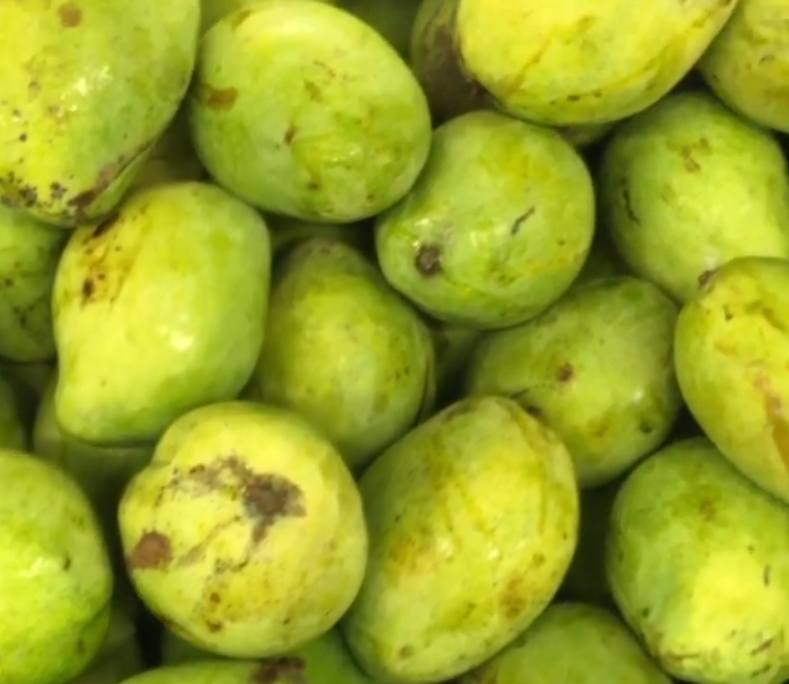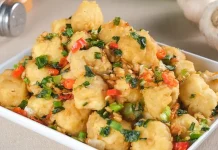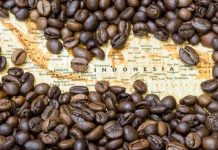Mango or Mangga (in Bahasa) is one of the tropical fruits that you can find in Indonesia all year long. There are many types of Mango varieties cultivated in Indonesia. Each variety has its own different shape and size, but they all have one thing in common: they’re delicious!
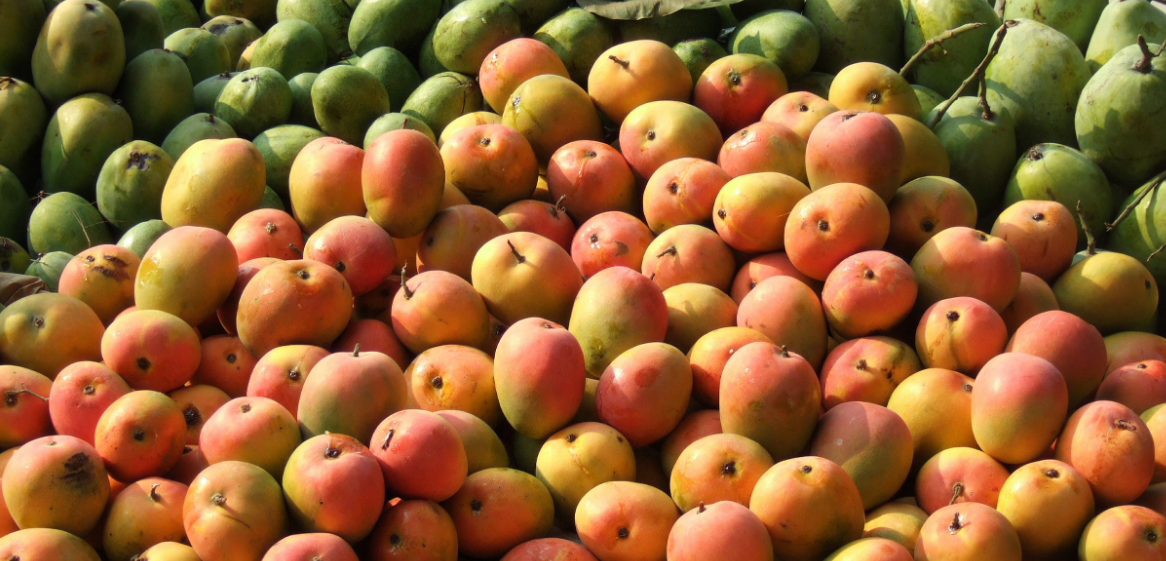 Most Mangoes in Indonesia are eaten ripe, but there are also a few types of young Mangoes that are usually consumed in Rujak (Indonesian fruit salads) or Sambal. Ripe Mangoes can be found easily in supermarkets across the country, traditional markets, or even from wild Mango trees near your home.
Most Mangoes in Indonesia are eaten ripe, but there are also a few types of young Mangoes that are usually consumed in Rujak (Indonesian fruit salads) or Sambal. Ripe Mangoes can be found easily in supermarkets across the country, traditional markets, or even from wild Mango trees near your home.
Check out our recipes for Mango Kulfi, ice cream and even burfi.
Here are few of the best and most popular Mango varieties that you must try:
Mangga Harum Manis
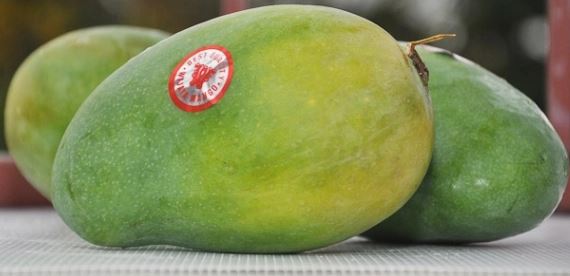
Mangga Arumanis or Harum Manis is originated from Probolinggo, East Java. Arumanis means “harum dan manis” or fragrant and sweet—just like its taste. The ripe Mangga Arumanis has dark green skin coated with thin grayish natural wax. The flesh is deep yellow, thick, and soft with little to no fiber. Mangga Arumanis is best eaten when ripe.
Mangga Indramayu
Just like its name, Mangga Indramayu is originated from Indramayu, West Java. It has a strong aroma with a little bit of strong sweet flavor. Mangga Indramayu is bigger in shape than other varieties of Mango, and along with its distinct aroma it’s pretty easy to distinguish Mangga Indramayu from other Mango varieties. The ripe Mangga Indramayu has green and yellowish skin. It has thick, slightly watery flesh and prominent fibers, making it best consumed during dry season.
Mangga Golek
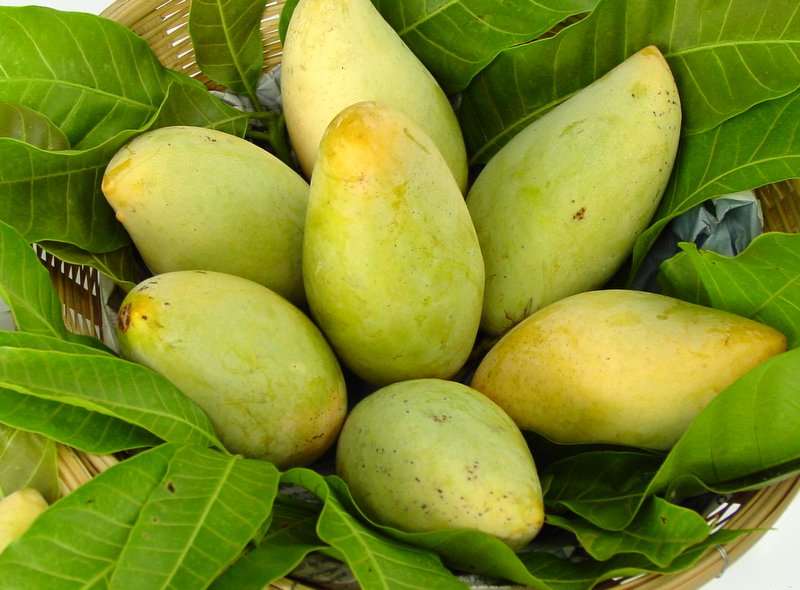
This type of Mango has longer shape than other varieties. The ripe Mangga Golek has green-yellowish skin with light brown dots. Young Mangga Golek is also often used for Rujak, as it is not too sour and the flesh is crispy. The flesh of ripe Mangga Golek is thick yet soft, not too watery and fibrous, tastes sweet and has deep yellow to orange color.
Trivia: “Golek” in Javanese means “to look for”, and it is said that you’ll keep looking for Mangga Golek after the first taste, hence the name.
Mangga Kweni
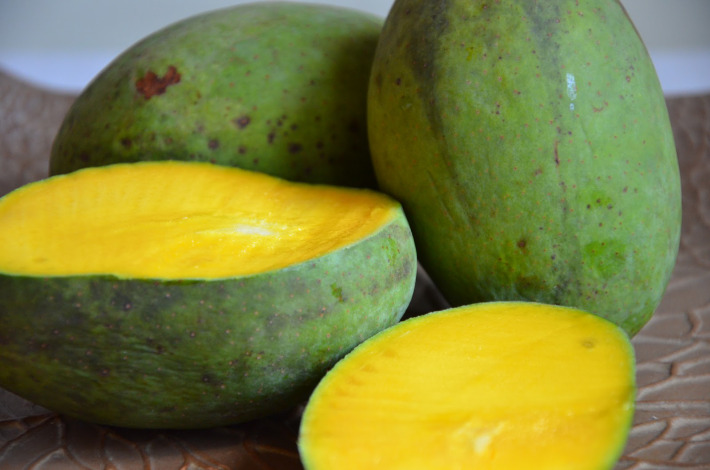
Mangga Kweni or Kueni has a strong aroma that distinguishes it from other Mango varieties. The flesh is mushy with a lot of water and fibers. Usually, young Mangga Kweni is mixed in Rujak, while ripe Mangga Kweni is mixed in Es Campur (fruit cocktail with ice and syrups).
Mangga Manalagi
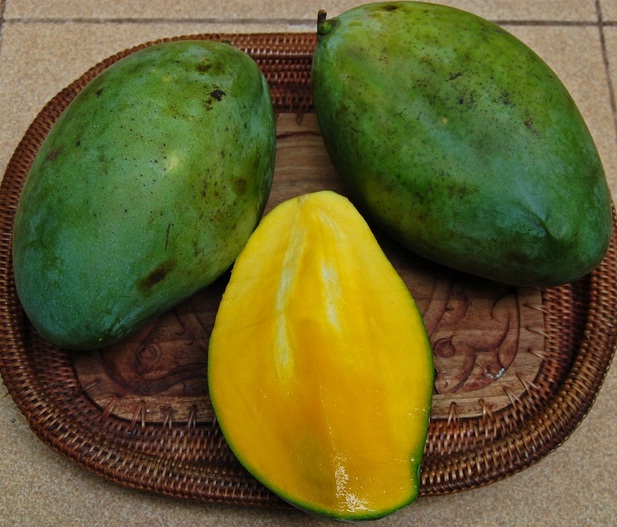
The flavor of Mangga Manalagi is combination of Mangga Golek and Mangga Arumanis. This variety of Mango has smaller size than Mangga Golek, and the skin looks similar with Mangga Arumanis’s when it’s ripe. Ripe Mangga Manalagi has sweet taste with thick, heavy, and fibrous flesh. It’s best eaten fresh, especially if it’s ripen on the tree!
Mangga Apel
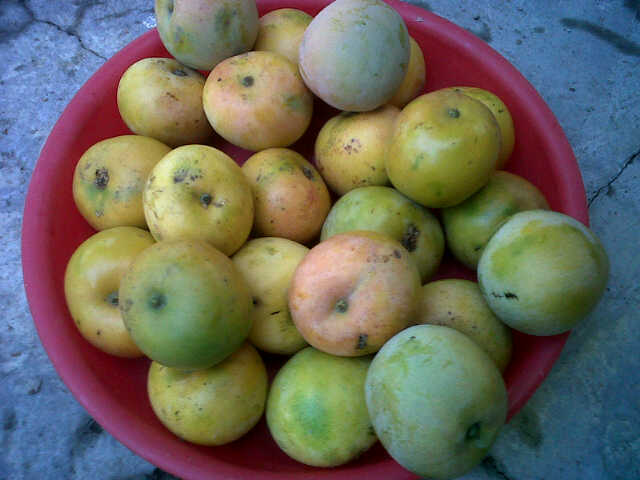
Its name really implies its shape. Unlike other varieties of Mango which have oval, pointed shapes, Mangga Apel’s shape is round, just like apple. The skin is green and slightly reddish on the upper part of the fruit. Young Mangga Apel tastes sour and has crispy texture (kind of like Granny Smith apples), while the ripe Mangga Apel tastes sweet and has soft texture. You may not easily find Mangga Apel in supermarket, because this is not a commonly cultivated variety of Mango. Mangga Apel is best consumed as Rujak.
Mangga Gedong Gincu
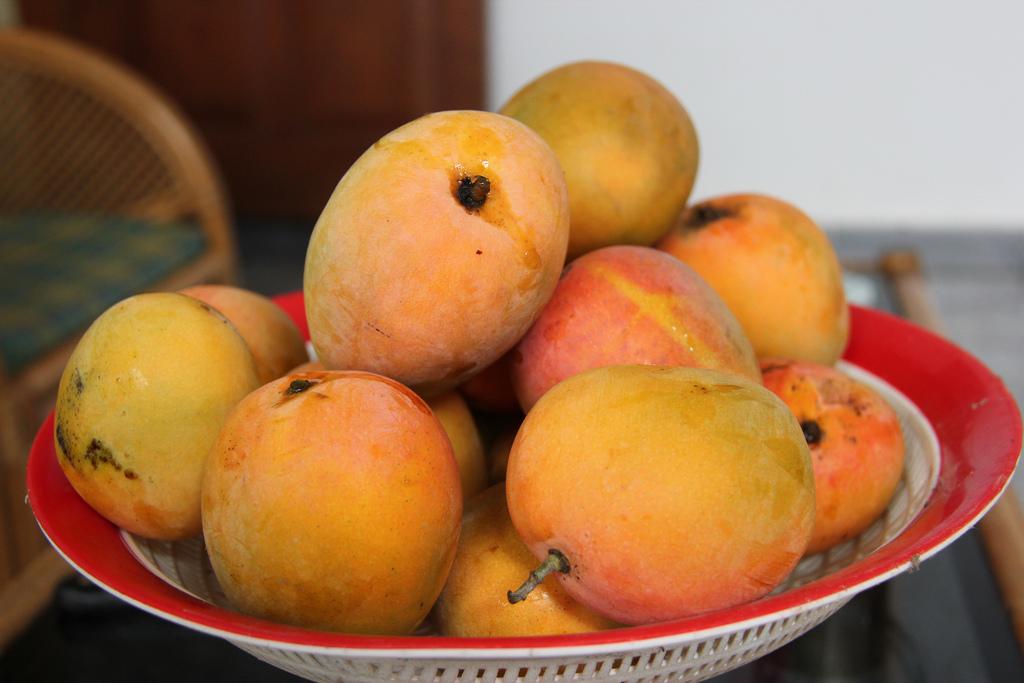
Mangga Gedong Gincu is mostly cultivated in Majalengka and Cirebon, West Java. Unlike others, this type of Mango has smaller size and a little bit flat. While mostly Mango varieties in Indonesia have green skin, Mangga Gedong Gincu has various colors: green, yellow, or red. A ripe Mangga Gedong Gincu has reddish skin and fragrant aroma. The flesh is yellow-colored and fibrous, makes it slightly difficult to cut.
Which Mangga is your favorite? Share with us!


